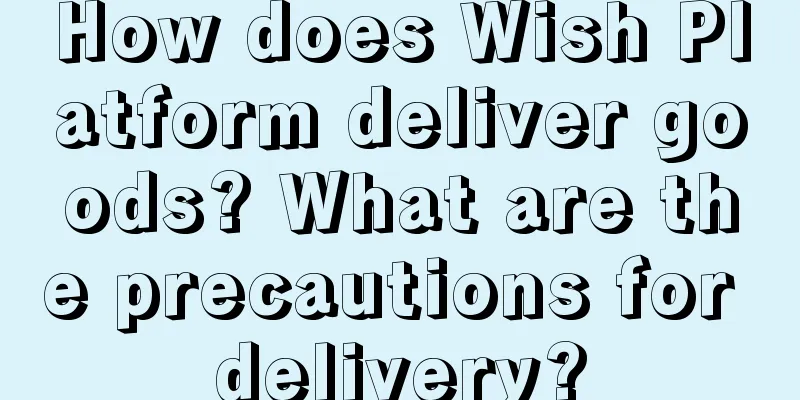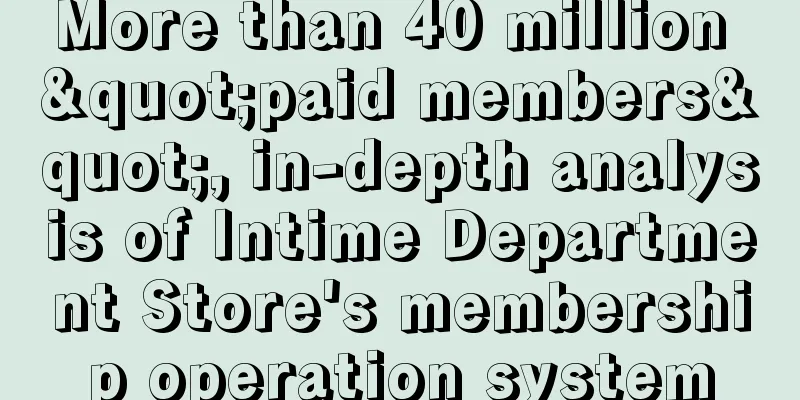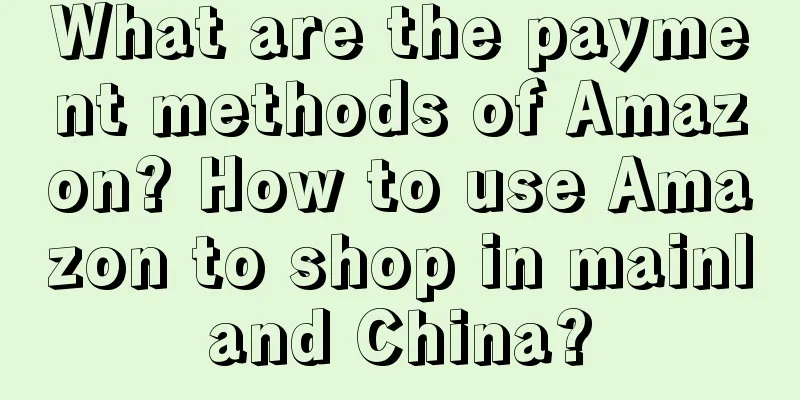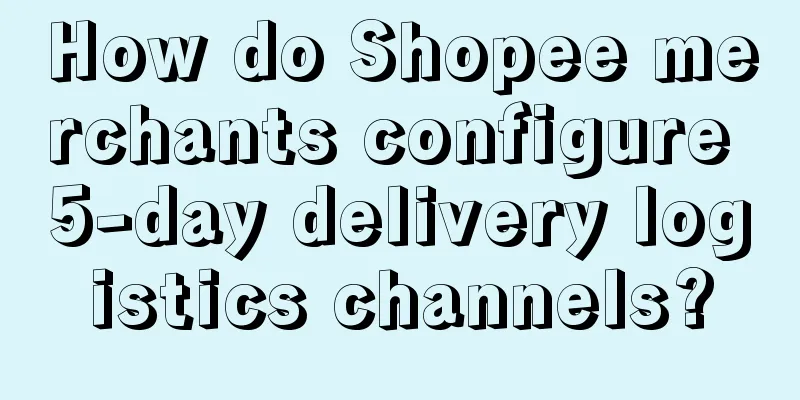Dopamine dressing is popular, revealing the marketing routines of brands using dopamine principle
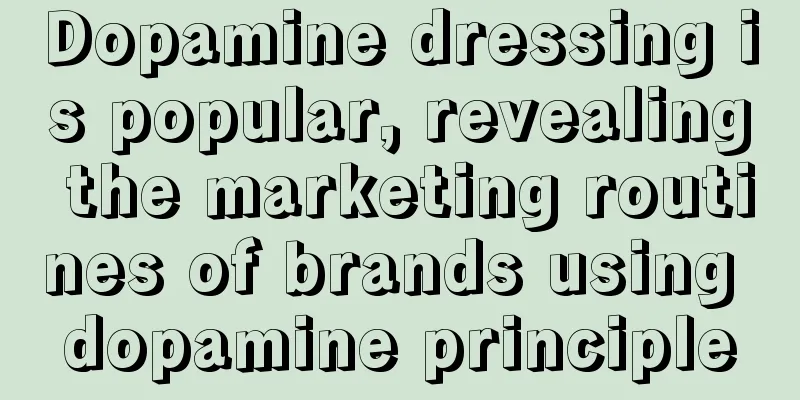
Since the beginning of summer this year, dopamine dressing has become popular, and people are sharing dopamine dressing tips everywhere on Douyin and Xiaohongshu. The so-called dopamine dressing is to dress yourself up with bright and colorful clothes to optimize a person's current mood. The idea behind it is that wearing vibrant and pleasant clothes can stimulate the brain to release dopamine, making people happier and more confident. Dopamine dressing is actually not uncommon. Brands such as Zara and H&M have launched clothing with bright colors, complex prints and playful patterns, which is the style of dopamine dressing. Dopamine dressing is a way of marketing using the neurotransmitter dopamine. In fact, we often see the use of dopamine for marketing in our daily lives. Today's article will talk about this topic. 1. What exactly is dopamine?To know how to use dopamine marketing, you should first understand dopamine correctly. In recent years, the word dopamine has gradually moved from the academic field to the daily field, but many people have a wrong understanding of this word. Most people believe that when a person gets what he wants, dopamine will begin to be secreted and bring him happiness. In fact, dopamine is not a "reward", but a "driving factor". That is, when a person expects or seeks a reward, the brain releases dopamine, and when a person actually gets a reward, the level of dopamine may decrease or remain the same. In this way, dopamine acts as a driving factor, prompting people to explore and obtain more rewards. For example, when a person smells the sizzling sound of steak, he may imagine the deliciousness and satisfaction of eating steak, which stimulates his reward expectation and stimulates the brain to release dopamine. When he actually eats the steak, he may feel very enjoyable, but this enjoyment does not necessarily increase the level of dopamine because he has achieved his expectations. Simply put, the sizzling sound of the steak stimulates the brain to release dopamine, not the steak itself. Most of the time, marketing always takes advantage of consumers' expectations to promote their dopamine secretion, which then drives them to complete the purchase behavior. 2. How do businesses use dopamine marketing?Using the dopamine principle for marketing means stimulating users' motivation and interest by creating and satisfying their reward expectations, thereby promoting their consumption behavior. The following are some typical methods of using dopamine for marketing. 1. Stimulate dopamine with novel productsDopamine is released because of expectations. Once expectations are exceeded, we will get extra rewards. This is why businesses try every means to launch new products and why consumers like to buy new products. Drinking a bottle of Coke, a cup of coffee, or eating a popsicle is nothing to look forward to or be surprised about. But if it is cherry-flavored Coke, coconut-flavored coffee, or durian-flavored popsicle, are you immediately interested? Dopamine will drive you to try these new things, just because of these fresh combinations, we get more pleasure from the anticipation. The brain will set expectations for these new products. The more it exceeds expectations, the happier it feels. Nowadays, the frequency of new products released by brands is obviously getting higher and higher. Mobile phones are updated once a year, and food has new flavors every year. They drive you to buy. The same is true for dopamine dressing. There is nothing new about wearing a pure black or pure red dress, but when you see those bright, colorful, and highly saturated clothes, your brain will immediately drive you to wear them. In recent years, emerging brands such as Happy Socks and Farm Rio have gradually emerged with their distinctive dopamine-stimulating dressing features. Take Happy Socks as an example, its colorful and richly patterned socks bring consumers a pleasant visual experience. Farm Rio is a leader in this field with its Brazilian-style, passionate and colorful printed clothing. 2. Stimulate dopamine with future expectationsThinking about a good thing in the future always makes you feel happy and smile. Businesses will use various means to make you eager to complete the good thing in the future. For example, new product launches can arouse your curiosity through various promotional information. Apple's product launches always attract millions of followers around the world because they always show some innovations and designs that exceed people's imagination, thus creating a sense of anticipation. Everyone who has watched the launch can't wait to place an order. Of course, most new product launches (except Apple) will also give out first-time discounts, which further stimulates consumers to place orders faster. Coca-Cola ads always emphasize the pleasure of drinking cola regularly, thus creating expectations. For example, you often see ads like this: On a sunny afternoon, a person is very thirsty after exercising. At this time, he opens a can of cold cola, drinks it in one breath, and makes an "ah" sound. When you see such ads on a hot day, you immediately want to rush to a convenience store to buy a can of iced cola. During promotions, many businesses will use limited time, limited quantity, and limited restrictions to create a sense of scarcity and urgency, making consumers feel that if they miss the opportunity, they will miss it, thereby stimulating your dopamine and allowing you to buy the product as quickly as possible. Businesses use future expectations to stimulate dopamine, and in order to make dopamine work more quickly, they have introduced tools such as credit cards and Huabei. If consumers are stimulated by the products they like but have no money, then tools like Huabei will become a good helper for dopamine, allowing consumers to complete purchases faster, realize expectations, and satisfy dopamine needs. Using consumers' expectations for the future to stimulate dopamine also includes negative expectations, which creates a sense of insecurity and encourages consumers to act as soon as possible. Daniel Lieberman, author of "Greedy Dopamine," said, "This old lady who always buys toilet paper doesn't care even if there are a thousand rolls of toilet paper piled up in the storage room. Her attitude is 'You can never have too much toilet paper.'" Because what she fears most is that one day when she needs toilet paper, there will be no toilet paper left. 3. Use surprise to stimulate dopamineWolfram Schultz, professor of neurobiology, discovered through experimental research that the dopamine impulse comes from surprise. Merchants set up randomness, uncertainty, novelty and other factors to make users feel excited and happy when they get or expect a surprise, stimulating the brain to release dopamine. Around 2000, Little Raccoon instant noodles were all the rage among teenagers, not because the noodles were delicious, but because these kids were fascinated by the Water Margin cards in them. Dopamine drives every child to get new Water Margin cards, so these kids buy countless bags of instant noodles. The first thing these kids do after buying the noodles is to see what cards they get. Today, Water Margin cards for adults are actually blind boxes. When a person has the idea of buying a blind box, dopamine starts to work, trying to get him to buy a brand new blind box with hidden items. At the moment of opening the blind box, his excitement and happiness reach their peak, and the secretion of dopamine also reaches its highest point. But when the blind box is opened and there are only ordinary dolls inside, his excitement will quickly disappear, and after a while, dopamine will drive him to buy again. 4. Stimulate dopamine with rewarding feedbackThe reason why games are addictive is that their inherent goal - the feedback mechanism promotes the secretion of dopamine. When you play games, you look forward to passing a level, and when you pass a level, you often get a corresponding reward, and then dopamine will drive you to the next level, thus forming a cycle. Many marketing methods use the goal-feedback mechanism of games to promote consumer purchases and become loyal customers. For example, using points redemption and membership benefits to create uncertainty and suspense, so that consumers feel that they may get greater rewards or discounts, thereby stimulating their desire to buy. Starbucks' Star Rewards membership program is a typical case of gamification marketing. Users can accumulate stars through consumption, sign-in, and participation in activities, and redeem membership cards and coupons of different levels; at the same time, users can also post their thoughts, post photos, and interact and comment in the Starbucks community to win more stars and rewards. In this way, Starbucks users will become loyal customers. Pinduoduo is the company that uses this goal-feedback mechanism to the extreme. A typical example is Kanyidao, which guides you step by step and gives you a beautiful goal. Every time you take action, you will get a certain reward, which drives you to share or do tasks again and again. It is said that Keep once earned 500 million yuan by selling medals. Regardless of the authenticity of the numbers, its principle is to use the goal and feedback mechanism of dopamine. KEEP creates a sense of challenge and expectation in consumers by setting different running kilometers, time limits, medal designs, etc., thus motivating them to participate in running activities and gain a sense of accomplishment and happiness after completing them. At the same time, KEEP also creates a sense of freshness and scarcity through regular updates, limited sales, new product recommendations, etc., making consumers feel that they will miss the opportunity, thus stimulating their desire to buy medals. 3. ConclusionFor most businesses, they may not be clear about dopamine and its principles, but years of business experience have been conducted in accordance with the principles of dopamine. Businesses will use various means to make users feel excited and happy when they get or expect some surprises, stimulating the brain to release dopamine. When you follow the instructions of dopamine, you fall into the routine set by the merchant. Author: Xunkong WeChat public account: Xunkong’s Marketing Revelation (ID: xunkong2005) |
>>: Some experience of becoming a million-user
Recommend
How to pay taxes when doing cross-border e-commerce with Shopee? Do I have to pay taxes on cross-border income?
Now more and more merchants are opening stores on ...
What are the types of infringements on Amazon? What are they specifically?
Speaking of Amazon infringement, it is actually di...
Year-end review丨Live streaming sales in 2023: anchor or platform, who is the super IP?
Today, the live streaming e-commerce industry has ...
Summary of the top ten typical incorrect usages of deepseek! (with examples)
As a powerful AI tool, DeepSeek is changing the wa...
How to view Amazon return orders? How do merchants handle return orders?
As a merchant, you must handle consumer return ord...
Kimi's way of making money is so abstract...
Have you used Kimi recently? Have you noticed the ...
Just now! The official account can modify pictures!
Public account articles can now modify images, whi...
Can international virtual credit cards be linked to WeChat for consumption? Can cash be withdrawn?
With the deepening development of globalization, i...
Exquisite self-pleasing, reverse parenting, has the marketing strategy of maternal and infant brands changed?
Maternal and infant brands have introduced Interne...
How to close Amazon Mexico? What are the conditions for deregistering from Amazon?
Amazon is the first platform for cross-border e-co...
What are the storage fee standards for Amazon US? How are excess storage fees charged?
After opening a store on the Amazon platform, you ...
Is a higher Amazon sell-through rate better? How can Amazon improve its performance?
Many merchants on Amazon are concerned about the s...
What is the Amazon warehouse entry deadline? How can I find out?
2022 is already halfway through, and the horn of h...
Douyin is attacking pictures and texts again, not just "hunting" Xiaohongshu
Douyin, a social platform that started with short ...
How to ship Gmarket from South Korea to China? Where to transfer logistics from South Korea to China?
More and more people are choosing to look for more...
